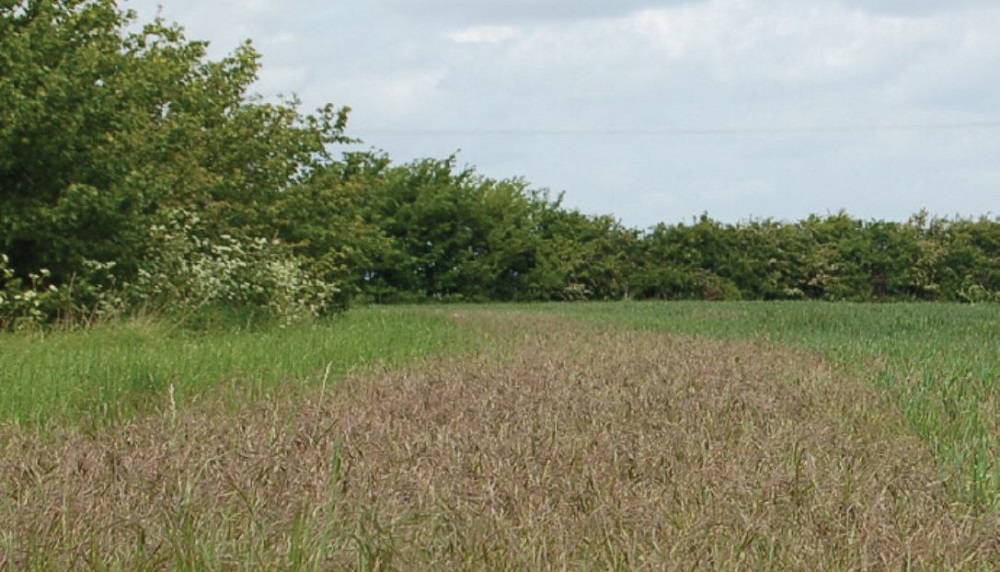- Home
- Knowledge library
- Cultural control tips for brome in cereal crops
Cultural control tips for brome in cereal crops
The presence of brome grass is associated with reductions in yield and quality in cereal crops. At high-population densities, weeds can also slow harvest, so it is important to take action to prevent, minimise and reduce brome pressure.
How to manage brome in arable crops
Brome basics: Top tips to manage brome weeds
- Make use of stale seedbeds and non-selective herbicides
- Although moderate control can be achieved in cereals with post-emergence herbicides, control is often highly variable – affected by weather and growth stage
- Combine chemistry with cultural control, as part of an integrated weed management strategy
The following actions can help to reduce brome pressure and take the pressure off chemistry. However, the degree of control depends on the particular species present.
Prevent weed introduction and minimise spread
- Bromes quickly colonise bare patches. Most infestations begin in headlands and field margins. Sow a perennial grass mixture in these areas to help prevent bromes establishing
- Avoid cultivating close weed-burdened field boundaries, because cultivations can move seed up to 50 metres
- However, ploughing the outer few metres (at the first signs of infestation) could help minimise risk of spread – provided the direction of the cultivation does not drag seeds further into the field
- Always clean machinery thoroughly between fields
- Although cultivating/spraying off a strip between a crop and its margin initially reduces populations, it provides a bare area for seeds to germinate. The same is true for bare patches caused by spray drift
- Be aware that any straw removed may contain substantial quantities of seed (especially meadow, soft and rye brome seed)
- Weed seed can also be introduced via contaminated seed, feeding contaminated hay in the field or by spreading contaminated manure
- Mow bromes within 2–6 days of flowering (April onwards). Ideally, before panicles begin to emerge
- As soft and barren brome can survive in field boundary swards with perennial grasses, mow to prevent them seeding
- Map brome patches (mainly June/July) and identify brome to group or species, and target control
Exploit the whole rotation to reduce weed pressures
- A non-cereal break (e.g. broad-leaved crop) enables use of a wider range of herbicides
- Kill seedlings with a non-selective herbicide pre-drilling
- Spring crops or fallow techniques provide a greater pre-drilling window for control
- A single year of fallow can deliver a 90% decline in the seedbank
- An 18-month fallow (covering two autumn periods) can deplete the seedbank completely, if seed return is prevented
Make best use of carefully timed and chosen cultivations
- Optimum cultivation time differs between Anisantha species and Bromus species
- Anisantha species: Cultivate and bury barren and great brome seeds as soon as possible after harvest, unless chopped straw provides good seed cover
- Bromus species: Leave meadow brome, soft brome and rye brome on the soil surface for one month to ripen before cultivating. Then shallow cultivate to place seeds in moisture and spray off emerged weeds
- Seeds buried (by ploughing) and retained to a 15 cm depth do not emerge
- High levels of brome are difficult to bury, as seeds clump together and can be flicked up during ploughing. Slow ploughing results in better burial
- Annual ploughing can be effective but a small proportion of seeds may survive at plough depth and can be brought to the surface in a subsequent season
Consider drilling later and increasing seed rate
- Early drilling – before germination of brome – increases the risk of weeds emerging in the crop
- Late-sow cereals (after November) to make the most out of stale seedbeds
- Always wait until brome has emerged and spray off with a non-selective herbicide
- Increase seed rate to maximise crop competition
A note on dormancy
Heavily influenced by weather, dormancy levels affect the proportion of seed that emerges in any season. Most populations of all brome species have weak and/or short-lived initial dormancy when seed is shed. Viable seeds will germinate quickly in moist soil or on the surface in chopped straw. However, some seeds have stronger initial dormancy that will extend the seedling-emergence period. Very few seeds (less than 1%) become fully dormant.

Many brome infestations begin around field edges and are spread by machinery.
Taking seed samples (for resistance tests)
- Sterile brome is the first grass to ripen in early June and the period for collection is over by the end of July.
- Meadow and rye brome are ready to collect from mid-late July through August.
- Collect seeds by gently stroking the heads over a bag or tray to remove the ripe seeds.
- Aim to collect a mugful.
Herbicide resistance testing (WRAG publication)
Topics:
Sectors:
Tags:

